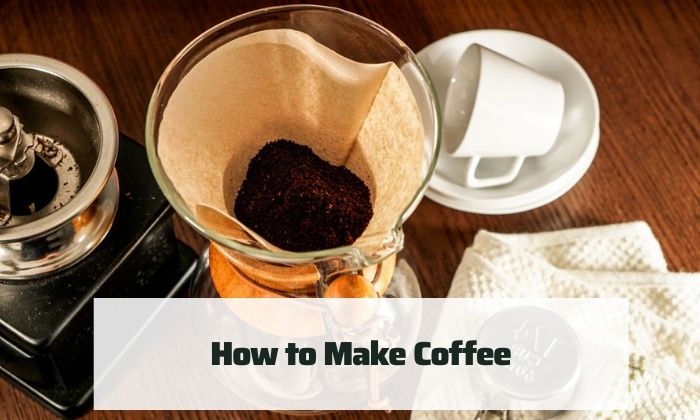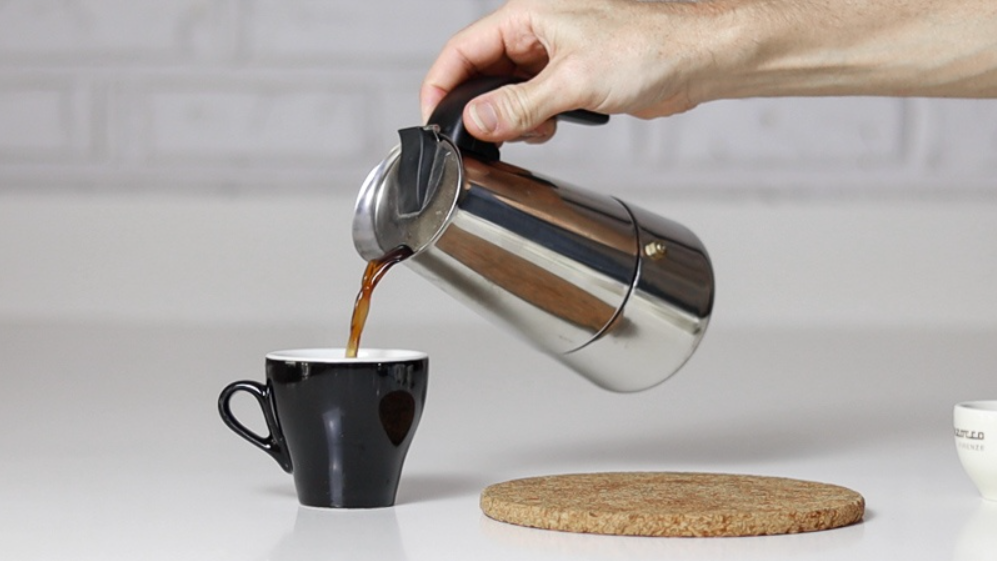How to Make Coffee At Home | Basic steps

The first sip of coffee of the day is like paradise, massaging the taste buds. It’s the best part of waking up, as one coffee-in-a-can company discovered long ago. For a single moment at your favorite coffee shop, or while your fingers hug your favorite mug in the kitchen, you’ve been transported to the location of your most recent vacation – the day’s worries melting away, allowing you to breathe in the serenity of sunshine as the caffeine smacks your brain.
Realizing this is why making the first cup of coffee of the day is so important for any coffee lover. Once you’ve mastered the perfect cup, you’ll never want to go back.
In short, making the perfect cup of coffee will necessitate three things above all: the right water, the right roast, and – the big one – your attention. Even if it’s tempting to put your grinds in a Mr. Coffee machine and walk away, it’s unlikely to produce the results you’re looking for. Showing your coffee some love during the brewing process, on the other hand, will result in heaping amounts – or at least a few tablespoons – of love in return.
The highlights of what you need to know that how to make coffee.

How to Make Coffee
Coffee plunger (French Press)
This simple device, also known as a French Press or Cafetière in other parts of the world, is gathering dust in the back of many an Australian pantry.
If you need to purchase one, a quality brand like Bodum can be found for around $20 in department stores or online.
The brewing procedure is straightforward:
- Remove the plunger, add coarsely ground coffee
- water that is just off the boil (around 93C for those with a digital thermometer)
- and give it a quick stir before plunging and serving.
The coffee-to-water ratio is critical for obtaining a good flavor extraction. Use 60g of coffee per litre of water as a general rule. Use 19g of coffee (approximately 12 cup) for a small plunger that holds 320ml of water.
Aeropress
This giant syringe, invented by the inventor of the Aerobie frisbee, has become iconic among baristas for the quality of coffee it produces and how easy it is to clean.
In terms of flavor, the Aeropress produces a cleaner, less gritty coffee than a plunger, but not as light as a standard filter coffee.
Many baristas, including myself, use a slightly different method than the official instructions that came with the device:
- Rinse the paper filter after inserting it into the base.
- Pour the brew into a sturdy mug and top with 14g of medium ground coffee.
- Stir in 220ml of freshly boiled water.
- After 1 minute, lower the plunger. Be patient; this could take up to 30 seconds.
The Aeropress costs around $35 and is available from a variety of online retailers and coffee roasters.
Clever coffee dripper
The Clever Coffee Brewer looks like any other pour over coffee brewer, but it has one major difference.
The bottom valve means it holds the water with the grounds until you put it on a cup. This means that, unlike other pour over coffee brewers, you don’t need a fancy gooseneck kettle to delicately pour the water over the grounds.
Simply put, if you enjoy the clean, delicate flavor of batch brew filter coffee at your local café, this is a simple way to replicate it at home.
This is how it works:
- Insert a paper filter, then rinse and drain.
- 18 grams medium ground coffee
- Pour in 300ml of not-quite-boiling water and stir gently.
- Allow 3 minutes for the tea to brew.
- Drain it into a mug or decanter.
The Clever Coffee Dripper should cost around $35 and can be purchased from a variety of online retailers and coffee roasters.
Stovetop espresso
This brewer, also known as a Moka Pot or a Bialetti after the popular brand, is a must-have in Italian kitchens.
The flavor of the coffee it produces is diametrically opposed to that of the clever coffee dripper. It has an old-fashioned taste compared to the espresso found in most Australian cafes, with a thick, heavy body and low acidity. It’s still delicious, but in a very different way.
In terms of brewing, I use hot water to speed up the process and reduce the amount of time the coffee comes into contact with. This can help to reduce the bitterness that is frequently a problem with stovetop espresso brewing:
- Fill the brewer’s base with boiling water all the way up to the brass valve.
- Fill the coffee filter with medium fine ground coffee.
- Screw the top section on while holding the bottom section with a tea towel (be careful, it’s hot).
- On a medium heat, heat the oil.
- You’ll notice the air escaping as the coffee pours through. Remove from the heat and serve.
A stovetop espresso maker will cost you around $30.
Low tech flat white?
If you enjoy the creamy texture of a flat white or latte, here’s a quick and easy way to make it without an espresso machine:
- Take a clean, glass coffee plunger and set it aside.
- Remove the plunger and fill the container with 200ml of cold milk.
- Microwave for a minute and a half (without the metal plunger).
- Remove from the microwave, add the plunger, and quickly plunge up and down for 20 seconds to make a dense milk foam.
- Remove the plunger, swirl the creamy milk into the coffee, and serve.

What’s the Best Coffee Maker?
When it comes to coffee makers, personal preference reigns supreme. No single brewing method is necessarily superior to another; each coffee maker simply operates differently and may be better suited to a specific need than another. Let’s take a look at the most common types and see what they’re good at:
Automatic Flat-Bottom & Automatic Cone
It makes sense to compare these two brewing methods because they are very similar: Water flows into a pot through a coffee filter and basket. You can use an automatic coffee maker for this method, or you can pour in a measure of hot water by hand. Aside from brand differences, the only difference between these coffee makers is the shape of their baskets (indicated by their names).
Best for: quickly brewing multiple cups of coffee at once.
French Press
This is a manual brewing method in which the grounds are soaked in hot water before being pushed down to the bottom of the coffee maker by pushing down on a plunger. Because of its stainless steel filter, a French press produces the most flavorful cup of coffee. While a paper filter absorbs the coffee’s natural oils (which contain much of the flavor), the press’s built-in metal filter allows the oils to pass through. Because a French press does not use a paper filter, there will be some coffee sediment at the bottom, so drink the last sip from the mug.
Best for: brewing one to four good-sized cups (depending on carafe size) of full-flavored coffee to be served immediately.
Automatic Gold Cone
This machine is similar to an automatic cone, but instead of a paper filter, it uses a gold-plated stainless steel filter. The gold cone allows the coffee’s oils to flow through the filter, producing a fuller-flavored coffee, similar to a French press (though still not as full as a French press).
Best for: brewing multiple cups of full-bodied coffee at once with the least amount of fuss. It’s a happy medium between wanting the flavor of a French press and the convenience of an automatic machine.




